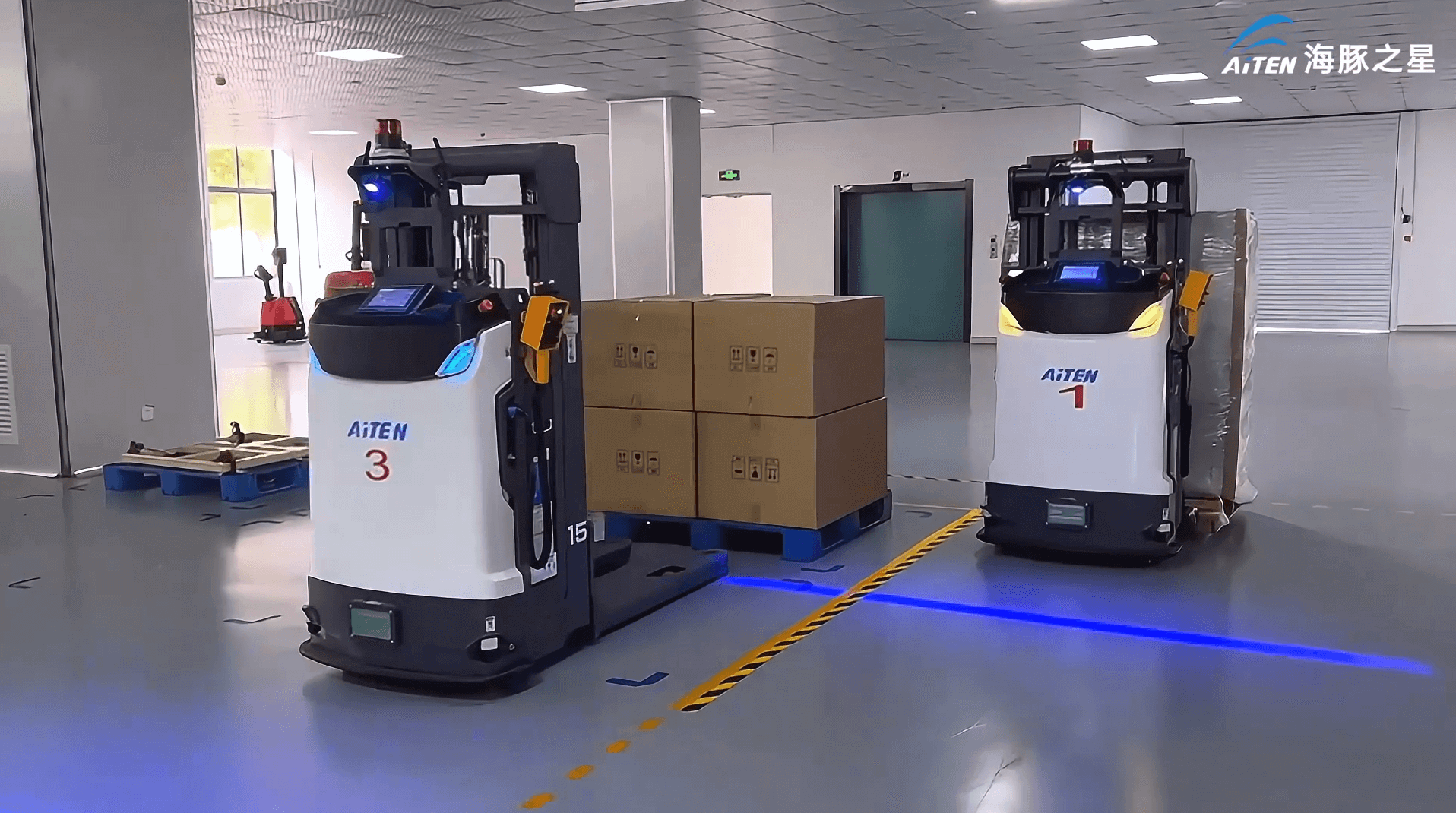自主式堆高機如何提高倉儲效率?
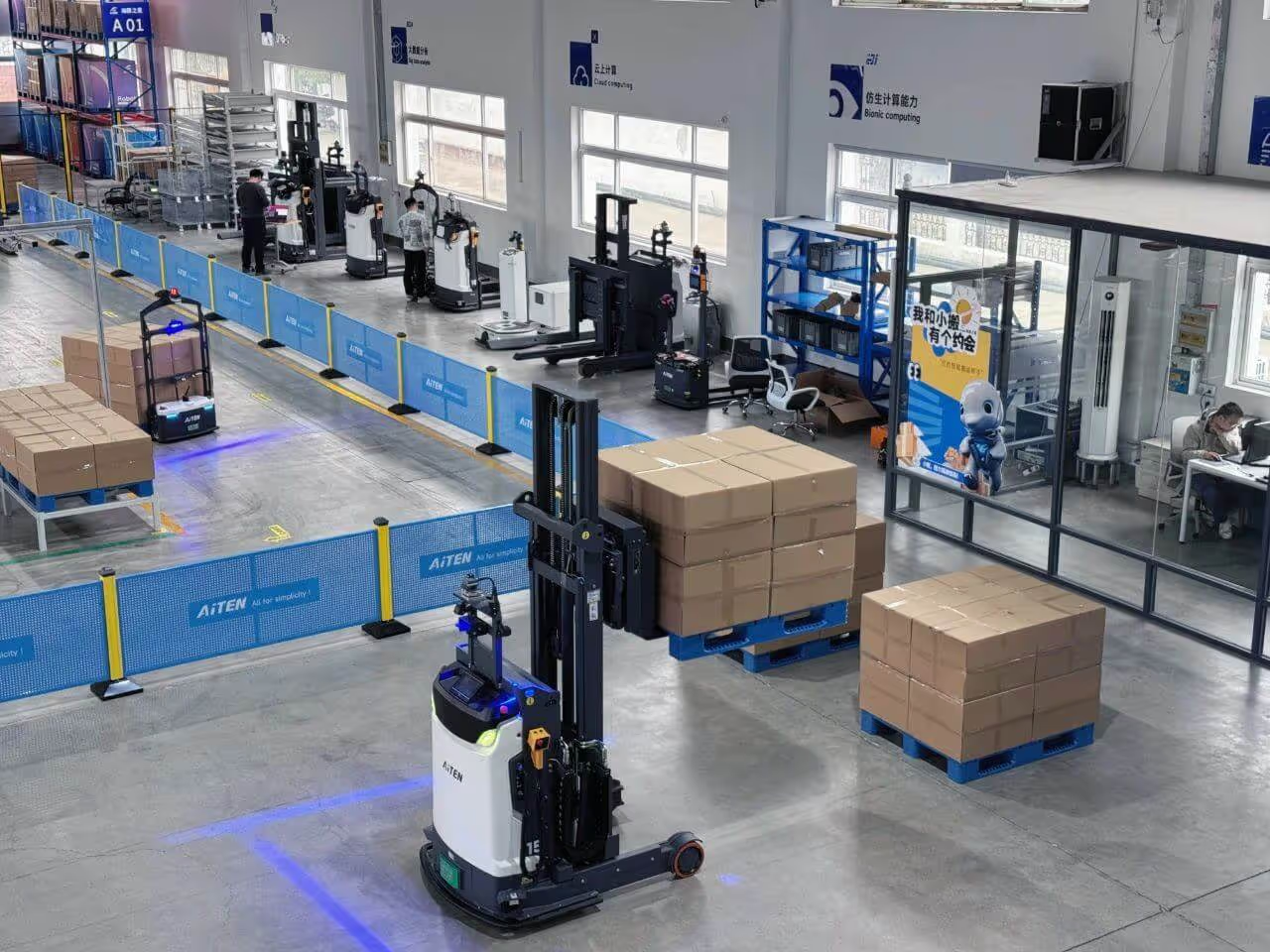
隨著供應鏈需求的增加和勞動力短缺的持續,自主式堆高機 - 也稱為自動駕駛或機器人堆高機 - 正成為倉庫最佳化的重要工具。這些智慧型機器提供可靠的解決方案,可提高生產力、加強安全性並降低營運成本。
無論您是物流供應商或是製造公司,將某些流程自動化都可以提高生產力。這可以透過逐步將個別流程自動化,或是完全改造大型公司的系統來達成。
在這篇文章中,我們將探討自動化堆高機如何大幅提升倉儲效率,以及具前瞻性的企業為何投資這項改變遊戲規則的技術。
自動化堆高機的主要優勢
與傳統的手動堆高機相比,自動化堆高機具有許多優勢,特別是在提高倉儲作業效率和生產力方面。一項研究發現,部署了這些先進機器的設施,生產力指標提高了 30%,突顯了它們改變倉儲產業的潛力。
1.減少對勞動力的依賴
物流業目前面臨嚴重的勞工短缺問題,而自動化系統在填補這個缺口上扮演著不可或缺的角色。自動化提供了一個可行的解決方案,它可以承擔傳統上由人類執行的重複性體力任務。
傳統的堆高機需要熟練的人力駕駛。然而,不斷攀升的人力成本和工人短缺問題,使得人員配置一直是個挑戰。自主式堆高機的運作不需人為干擾,可全天候運作,無需休息、疲勞或排程衝突。這導致
- 一致的材料流
- 降低對人工的依賴
- 加快自動化投資的 ROI
許多案例研究顯示,企業已成功部署自動化技術,以紓緩勞工短缺問題,並在勞工短缺的情況下仍能維持營運效率。此外,自動化可讓組織重新分配人力資源,讓您的員工可以處理更複雜、更有附加價值的工作。
個案研究:從手動搬運到無人搬運:MP10S + TP30 移動機器人在製造業中的協同應用
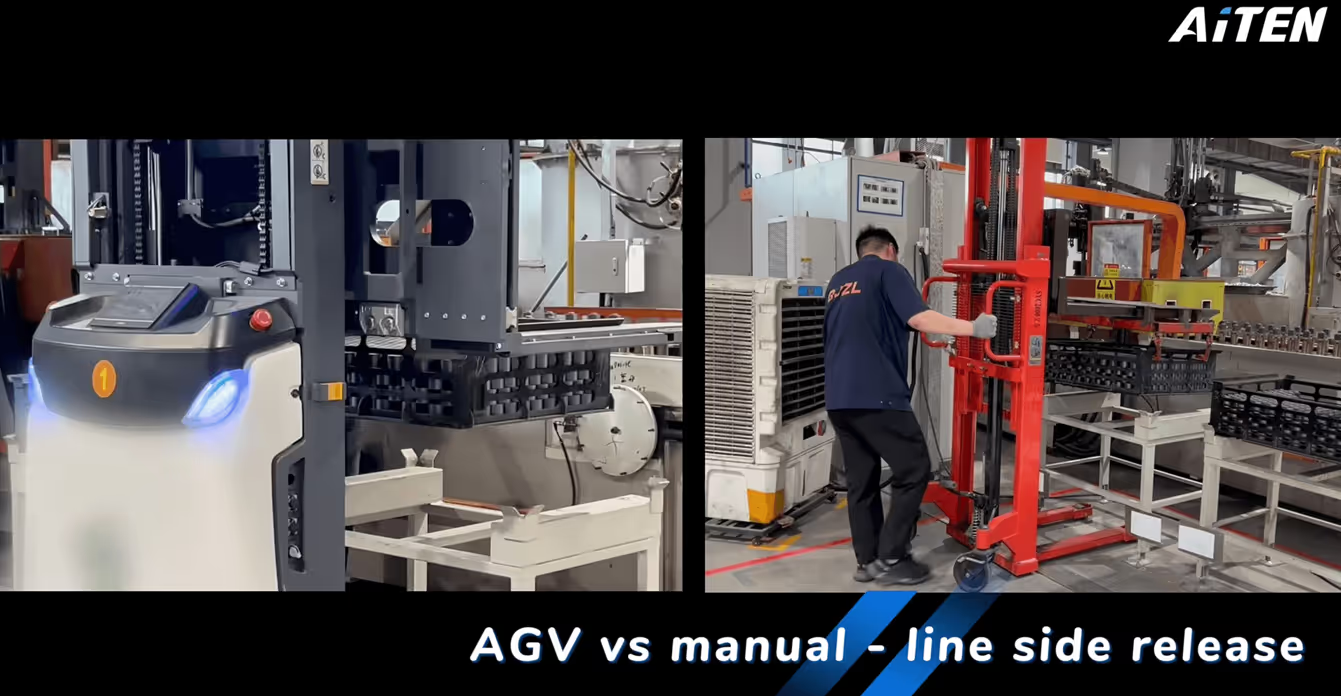
2.提高精確度和減少錯誤
自動化堆高機的主要優勢之一,就是能夠遵循精確的路線,並持續處理貨物。透過使用先進的感應器、攝影機和即時映射技術,這些堆高機可減少..:
- 由於處理不當造成的產品損壞
- 托盤放置不正確
- 庫存計數錯誤
其結果是提高庫存準確性,並簡化履行程序。
3.加強工作場所的安全
自主式堆高機所提供的安全強化功能值得一提,因為這些機器可大幅降低複雜倉庫環境中的人為錯誤發生率。憑藉先進的障礙偵測和緊急停止功能,自主系統徹底改變了安全規範,並大幅降低了事故率。
不幸的是,傳統堆高機造成的倉儲意外屢見不鮮。自動化堆高機配備了先進的安全雷射掃描器,可以偵測到任何障礙物,並在必要時停下來。即使在近距離操作時,它們也能確保安全的工作環境。
據報告,採用自主技術的倉庫大幅降低了工作場所的意外事故,有些設施的意外事故率降低了 40%。這些安全措施與持續監控能力結合,不僅確保倉庫運作更有效率,也為所有相關人員提供更安全的環境。
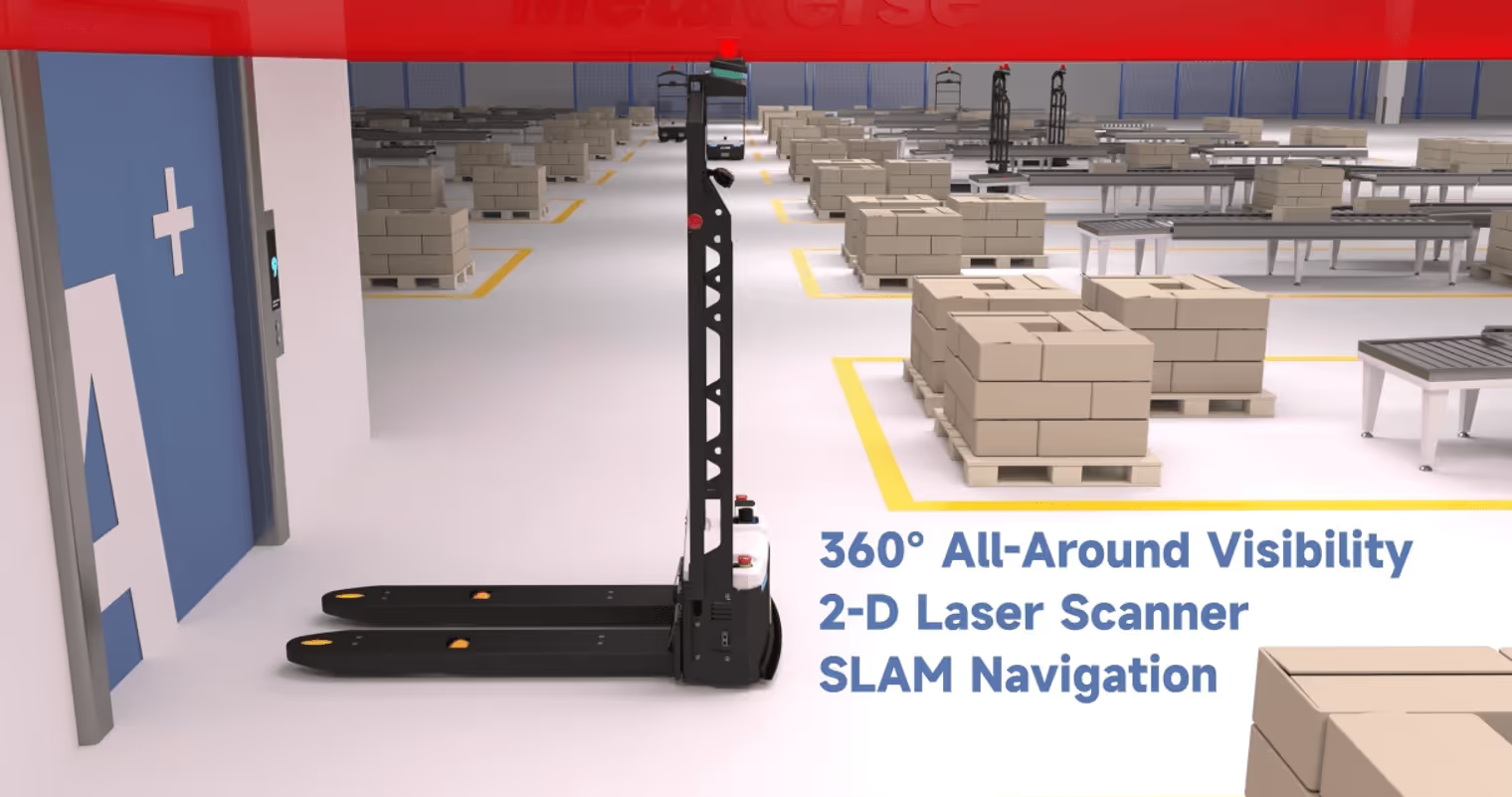
4.優化工作流程和產量
自動化有助於實現一致的工作流程和高效的駕駛行為。智慧型訂單與車隊軟體可將運輸距離減至最短,並避免車輛擁塞,從而全天候提高您的營運效率。
自主式堆高機與倉庫管理系統 (WMS) 和製造執行系統 (MES) 整合,可動態適應工作流程的變化。優點包括
- 智慧型任務優先順序排序
- 最佳化路線以避免擁塞
- 與其他自動化設備同步
這樣的整合可提高產能並縮短停機時間。
倉庫經理會很欣賞機器人叉車,因為它能幫助他們增加儲存容量並有效利用空間。一旦擷取程序自動化,就能加快出貨速度,並減少儲存空間的庫存積壓。
5.可擴充性和靈活性
無論是在旺季擴充規模,或是適應佈局變更,自主式堆高機都能提供無與倫比的靈活性。現代機型可以
- 在狹窄的走道和動態環境中導航
- 處理各種類型的貨物(托盤、貨架、貨櫃)
- 只需最少的組態變更即可重新部署
這使它們成為成長中的企業和多班營運的理想選擇。
6.降低營運成本
雖然初期投資可能相當龐大,但自主式堆高機可降低長期成本:
- 取消加班費
- 減少訓練和入職支出
- 將設備停機與維護時間降至最短
這些節省直接貢獻於底線。
實際應用
採用自主式堆高機的產業包括
個案研究:
效率提升 40%:AiTEN Robotics 在發動機製造公司的創新應用
智慧型排程系統與 AGV 機器人讓倉儲效率提升 60%,並實現零工傷突破
您營運的哪些部分可以自動化?
想像一下倉庫中所有重複性的貨物處理。可以在以下領域實現自動化:
- 長距離托盤運輸:工作站之間的重型水平運輸
- 塊狀堆疊:塊狀堆疊以實現緊湊型儲存
- 高架倉儲:在高處儲存和檢索貨物
- 拖曳:在工作站之間及時運送零件
- 高密度儲存:貨架托盤運輸
有興趣將此精益方法應用於您的組織嗎?立即瞭解更多關於自動化的資訊,並探索如何從AiTEN Robotics 廣泛的自動化解決方案中獲益。
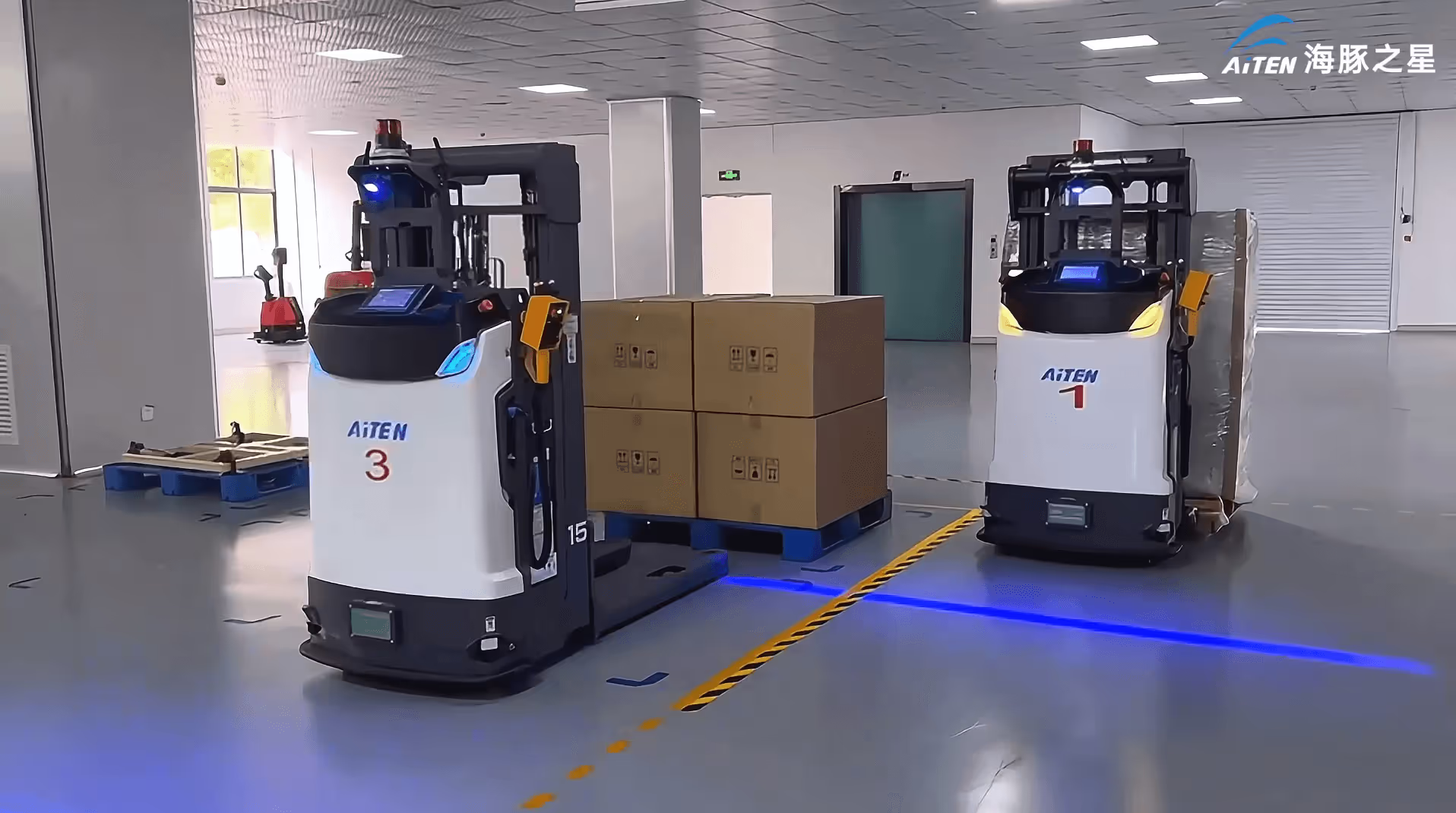
自動化堆高機倉庫的未來
自動化堆高機倉庫代表著倉庫效率和安全性的革命性躍進。透過自動化傳統的手動任務,這些系統在提高生產力、降低成本和加強安全性方面提供了顯著的優勢。儘管在實施過程中可能會遇到挑戰,但其長期效益使自動化堆高機倉庫成為現代物流和供應鏈管理的重要組成部分。隨著技術的不斷進步,自動化堆高機倉庫在塑造未來倉儲方面的作用無疑會越來越重要。
此外,基礎設施升級可能包括擴充充電站和先進的通訊系統,以有效管理更大的車隊。未來,我們將專注於建立更具適應性和可擴展性的自動化系統,以滿足大型配送中心的需求。
總結
自動化堆高機不僅是一種技術趨勢,更是一項卓越營運的策略性投資。透過提高準確性、安全性和速度,它們重新定義了現代倉庫管理的可能性。
對於想要保持競爭力並為未來做好準備的企業而言,整合自動化堆高機已不再是可有可無,而是必須的。
為何選擇 AiTEN 來滿足您的自動化堆高機需求?
AiTEN Robotics 是自動化工業車輛 (AMR/AGV) 和物流自動化解決方案的全球領導者。AiTEN Robotics 已開發出十個產品系列,可滿足全堆物料處理情境的需求。AiTEN Robotics 已在 30 多個國家和地區部署了 200 多個專案,受到眾多財富 500 強企業的信賴,涉及汽車、食品飲料、化工、製藥、製造和第三方物流等行業,提升了運營安全、效率和未來就緒能力。
聯絡 AiTEN,了解我們創新的自主式堆高機和智慧型系統如何改變您的物料搬運流程。












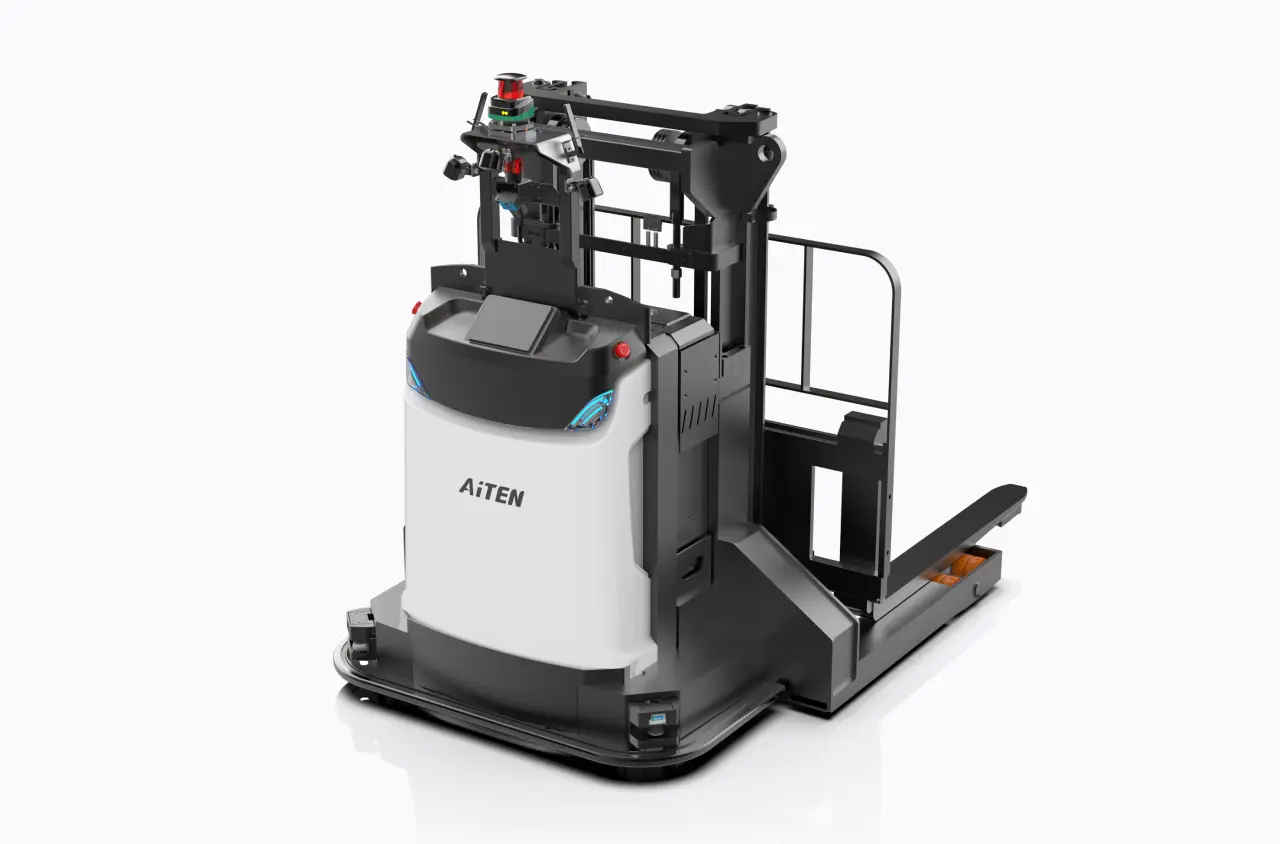



.webp)







.jpg)















_%E7%94%BB%E6%9D%BF%201.avif)
